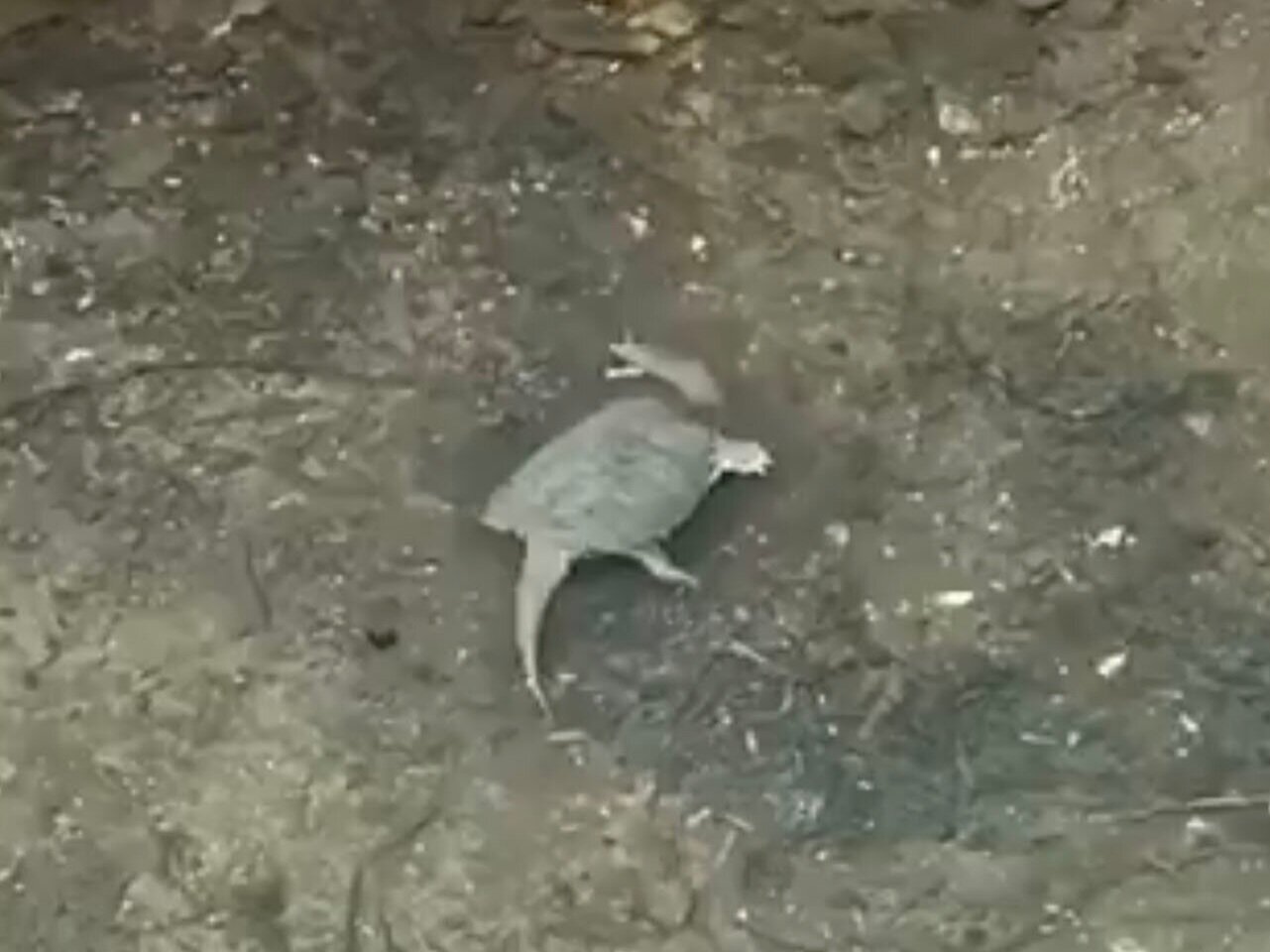Wildlife Observations: Summer Doldrums
This column last ran on July 3, under the headline “Solstice Stillness” and bemoaned the relative lack of wildlife activity — or at least any observations beyond the usual suspects (robins, gray squirrels, sparrows, etc.) during the hot months. The reduced number of observation submissions to the Swarthmorean in July bore this out. But over the last week, two submissions arrived with first-time critter sightings: a snapping turtle and an American eel! Let’s hope this marks a continuing upturn as we slowly but surely approach the fall migration.
Even better, both sightings were accompanied by dramatic visuals! Lauren Santi of Swarthmore submitted a video clip worthy of “Mutual of Omaha’s Wild Kingdom” (a reference relevant only to persons of a certain age) of a snapping turtle first latching onto the tail of a rat, then pulling the rat under water, and finally snapping it down.
American Eel
Nora Scott of Swarthmore and Mark Roberts of Rose Valley submitted a photo of an American eel they spotted in Ridley Creek in Rose Valley. American eels are born in the seas around the West Indies. They swim into rivers from Virginia and New York where they stay for years before returning to the sea where they were born to spawn. Eels are still commercially harvested on the upper reaches of the Delaware River. Abandoned millrace dams hamper their migration, so it’s reassuring to know they can penetrate Ridley Creek at least as far upstream as Rose Valley. Perhaps a future column will focus on the need to remove these abandoned dams to permit the migration of eels and shad and possibly other species.
In the last days of June, a bald eagle, pursued by a crow, flew high over my house on the unit block of South Princeton Avenue. The sun made the white head and tail glow brightly, eliminating any doubt as to the identification. In the last week, I’ve twice heard Eastern screech owls, once from my backyard and once near McCabe Library on the Swarthmore College campus.
From his yard in early July, David Eberly of the 100 block of South Princeton Avenue heard and saw pileated woodpeckers several times.
Walks in the Crum Woods at dusk have resulted in regular beaver sightings, one great blue heron sighting, and numerous detections of the sweet song of the wood thrush.
On August 8, Julie Ellis of Swarthmore noted that the tropical storm that had flooded Crum Meadow five days earlier had stranded schools of minnows and other fish in ephemeral puddles. She gathered her children and some of their friends — masked and distanced — to perform a Dunkirk-like rescue mission and return the juvenile bullheads, catfish, tessellated darters, blacknose dace, and minnows to Crum Creek.
Jon Lichtenstein of Wallingford submitted a photo of a bat he found on his lawn. After research indicated that bats have difficulty launching from the ground (preferring to drop from their upside-down overnight perches), he put on gloves, picked the bat up, and thrust it into the air, whereupon it took flight. Kids: bats can carry rabies, so don’t try this without adult supervision.
Bill Menke of Swarthmore submitted a photograph of a native praying mantis.
Ken Robinson of Swarthmore submitted a photo of a red fox walking down his driveway in the morning like it owned the joint.
You can submit your wildlife sightings below.












